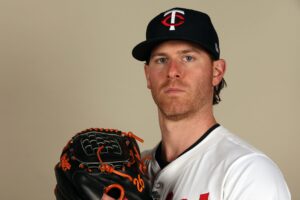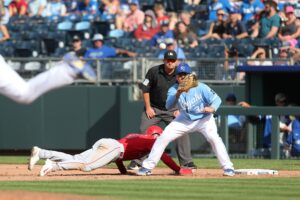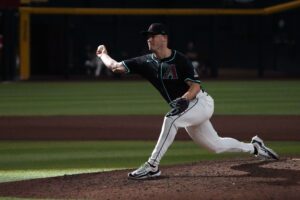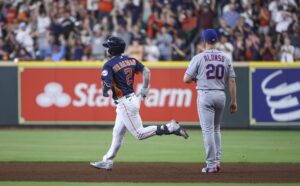ESPN once called Game 7 of the 1991 World Series between the Atlanta Braves and Minnesota Twins “The Greatest of All Time”. The Twins emerged victorious, but the loss signaled something to Braves fans: hope. In 1990, Braves and Twins were the worst teams in their respective leagues. Somehow, both managed to find each other in the world’s greatest sports series.
Fast forward to the mid 90’s and the Braves almost-dynasty was born. Going worst to first in both the American League and National League may be a feat that will never be accomplished again. However, if the upbringing of the Bobby Cox era is any indication of how a successful team is born, Braves fans should once again have a glimmer of hope in their back pocket.
Hope for Braves Fans: An Organization on the Rise
The 1990’s were a decade of massive importance to the Braves organization, featuring five NL Pennants, one coveted World Series title (1995), three Hall of Fame pitchers (Greg Maddux, Tom Glavine, and John Smoltz), and one Hall of Fame manager. Read that again: three hall of fame pitchers. That’s absurd. A casual observer would assume that means success, but those who have been around the game long enough know better.
Pitching is only half the battle, and the Braves had no hitting. One world title is not enough for such an individually and statistically great team (specifically in the regular season). Bats get it done in the post season, while pitching plays second fiddle. No matter how many great players you have, success is no guarantee. Teams with great hitting don’t get to play in October without a few great pitchers, but as you can see by the construction of Theo Epstein‘s Chicago Cubs, it’s about balance.
The Lifecycle of Success
Few teams stay great for decades at a time, successful teams seem to come and go in a fluctuating pattern. It’s rather a simple process. After successful seasons, some players leave for more money, while others are traded for prospects. The team suffers for a few years, until hopefully a couple prospects turn into studs. Excess prospects get shipped off for star pitchers or hitters. The team then makes a splash in free agency, makes a run, and the process repeats. This is easier said than done, but it’s important to note a pattern. If we can identify certain stages of the cycle, we can estimate when our time will come. It’s no guarantee, but even the slightest bit of hope in a fanatics eyes is enough cause for excitement.
The current Braves organization falls somewhere between suffering and preparing for a run. That is not an overnight process; it’s probably 2-4 years in the making. Ever since Cox retired, the Braves have been somewhat of an enigma. In the beginning of Fredi Gonzalez‘s tenure, they actually weren’t too shabby of a team. Jason Heyward and Craig Kimbrel were the most noteworthy players then. The team as a whole never quite gained traction, and after they lost the wild card game to the St. Louis Cardinals in 2012 (and the Washington Nationals became good), the club fell into a downward spiral.
Heyward was hit in the face with by a pitch in 2013 and had to get his jaw wired shut, and his development came to a hault. He was traded to the Cardinals in 2015 for Shelby Miller. Although he recently earned the title of World Series Champion with the Cubs, his value carries more price in name recognition than game play. The same goes for Kimbrel. The Fredi Gonzalez experiment was a failure before it even began. He inherited a decent team and never gained a good relationship with his players. Nobody wants to be the replacement manager after a legend departs, and usually there’s a reason he decides to hang it up.
As any Braves, or baseball, fan knows, the Braves have acquired the #1 ranked farm system in MLB. There’s a few ways to reach this title, but typically it’s a combination of exceptional scouting and drafting paired with advantageous and aggressive trading. This leaves them right in the middle of the successful team lifecycle and is a necessary step towards glory. Having a strong farm system makes sense on paper, but obviously there is still significant room for failure. No prospect is a guarantee. Some live up to their potential, some regress to average ability, some fade out in five years, and some become lifetime minor leaguers. Then there’s the outlier, the average prospect who turns into the next Smoltz. The golden ticket of players.
The Right Player for the Right Time
Among all these categories of trades, one carries more risk than all others. It’s the Swanson effect. Sometimes teams trade their best prospects to address a gap in their team. The Heyward-for-Miller deal was the beginning of the uphill climb for the Braves. Miller came over as an average guy, probably better than the typical Braves pitcher, but still not an ace like Julio Teheran. Then, Miller started dealing and posted a 3.02 ERA with 173 strikeouts in his only season. Granted, he only won six games; the Braves couldn’t hit water if they fell out of a boat that year.
Miller put Braves GM John Coppolella in a tough spot. Does he trade his newfound #2, or even potential ace, or does he sell high? Enter: The Arizona Diamondbacks.
The Diamondbacks selected Dansby Swanson out of Vanderbilt in 2015 with the #1 overall pick. On December 9th of that year, he was packing his bags for Atlanta, Georgia. For those who don’t know, Swanson is from Cobb County in Georgia. The Braves new stadium, Suntrust Park, is located in Cobb County. This has to be one of the greatest homecomings of all time.
Arizona traded the future face of its franchise, and only got a pitcher in return. This never happens. The last #1 overall pick traded before making his MLB debut was Adrian Gonzalez in 2000, and he might be a future Hall of Famer. To add insult to injury in Arizona, Ender Inciarte, one of the best defenders in the league, and Aaron Blair also came over in that deal. Yet, this is only the beginning of it. Miller came to Arizona playing the best ball of his life, but he struggled to pick up where he left off. He then posted a 7.14 ERA and was sent down to the minors in 2016. Coppy looks like a genius now.
The Pieces are in Place
The Braves highly revered farm system is in place, led by Swanson and Ozzie Albies (the future 6-4 play for Atlanta). It’s safe to assume a few pitchers will come out of there, perhaps a couple of bullpen guys. They will get added to current rotation guys like Matt Wisler and Mike Foltynewicz, an ace like Teheran, and a closer who can pitch like Jim Johnson did last season. Top it off with a stud in Freddie Freeman, big names like Matt Kemp, and excellent young fielders like Mallex Smith and Inciarte, and the Braves start to shape up like a decent team. They could also acquire big free agents; having so many young players allows for big contracts to be absorbed (we’re waiting, Mike Trout). Seriously, the Los Angeles Angels have an awful farm system, ranked worst in the majors. It. Could. Happen.
The 2016 Braves never seemed to quite put it all together. If the pitchers were performing, the runs weren’t there; if the runs came in bulk, the pitching would be abysmal. The Braves went 37-68 over the first four months and then 31-25 over the final two months. They averaged 5.16 runs in that two-month streak, compared to 3.43 over the first four months. The difference? Freeman batted .340 and the heavyset Kemp slugged .519. Inciarte posted a solid .342 average and a certain Dansby Swanson came up (some say prematurely) and racked in a .302 average. The bats got it done.
Maybe it was a fluke and just a team getting hot. Maybe team constructed mostly of veterans finally found it’s groove with a little help from a youth spark and a big trade. Many fans would rather watch a team lose with promising youth on the field than veterans like A.J. Pierzynski just earning their paychecks. That stage is completed.
Moving Ahead
Carrying a strong performance into the next season will be a challenge, and Brian Snitker is just the man for the job. If players like Kemp and Nick Markakis can bat half as well as they did in that two month span, this team can nab a Wild Card spot. The thought of a full season of Swanson and the highly anticipated debut of Albies bring excitement, regardless of the eventual record. However, the fact that Coppy signed veteran arms like R.A. Dickey and “Big Sexy” Bartolo Colon, and acquired Jaime Garcia, might mean that the process has been slightly expedited.
A six-man rotation is on the horizon for Atlanta, to be comprised of veteran and youth arms. They have a closer in Johnson who came out of nowhere with a 3.06 ERA and 20 saves. An outfield with Inciarte and Smith brings great speed and high averages balanced with the slugging of Kemp, while an infield with the power of Freeman and possibly Adonis Garcia, coupled with on-base hitting and speed from Swanson and (hopefully) Albies provides the Braves with one of the most balanced orders in recent memory.
It won’t happen next year, or the year after or maybe ever, but there’s hope. In the cycle of successful teams, significantly more time is spent in the trough than at the peak. It’s almost time to reach that point. First step: playoffs. Don’t forget, the Braves still have just about all their big time prospects. Nobody should be surprised if three or four of them are unloaded next offseason, or even at the 2017 deadline if the Braves record suggests they’re prepared. It all starts with failure. Look at the timeline: Cox left and the Braves struggled, lost or traded their top players, built a strong farm system, lost a bunch of games, and eventually turned themselves from buyers into performers. All the tools are there; the studs, the farm system, the free agents. They even built a new stadium for their new generation of players. There is hope for Braves fans.
If you are once again disappointed by the Braves in 2017, simply enjoy the highlights and pray that the youth continues to develop. Remember, all these struggles will make an eventual title more savory than ever. Braves fans are patient, just hope, pray, breathe, and maybe even cry. The Braves are on the rise.
Main Photo:






